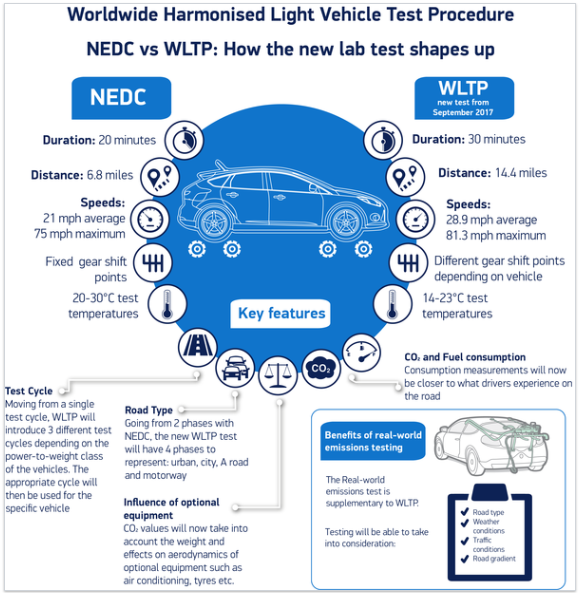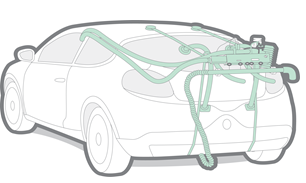The ‘toughest ever’ UK new car emissions tests come into force today.
Replacing a 20-year old single test, the EU requirements will see all newly launched cars in the UK tested on the road. The two new tests are meant to provide more accurate CO2 and fuel economy figures.
The new tests, which fuel consumption and carbon dioxide (CO2), nitrogen oxides (NOX), particulates by mass and number (PM/PN) and carbon monoxide (CO), are part of European regulations designed to improve air quality and tackle climate change.
From today, every new car going on sale in the UK will need to undergo a new test called the Worldwide Harmonised Light Vehicle Test Procedure (WLTP), which measures all regulated emissions, as well as CO2 and fuel economy.
Like the previous test, it is conducted in controlled laboratory conditions for consistency across every test and every new vehicle in every country.
However, it is faster, longer and more dynamic, with a greater range of vehicle and engine speeds, engine load, gear changes and temperatures. It will also take into account modern vehicle technology.
And, because it is based on some half a million miles of real driving data, it is designed to be far closer to the conditions most people experience on the road today.
Secondly, in a world first, new models being developed for sale in the UK will also need to prove their air quality credentials by passing a brand new Real Driving Emissions (RDE) test using portable emissions measurement (PEMS) equipment.
This analyses the trace tailpipe emissions of pollutants, including NOX and particulates, while the car is driven in every-day and extreme conditions.
This will ensure vehicles meet the Euro 6 emissions standard on the road as well as in the lab.
Over the past 20 years, vehicles have advanced at a rapid rate, with high tech safety and comfort features, from electronic stability control, parking sensors and airbags, to air conditioning, heated windscreens and electric seats now increasingly fitted as standard.
However, the way they are tested has not kept pace, resulting in a gap between performance in the lab and on-road where fitment of these in-car technologies can differ across models, and conditions such as speed, congestion, road surface and driving style can vary dramatically from journey to journey and driver to driver.
Mike Hawes, Society of Motor Manufacturers and Traders’ chief executive, said: “Combined, these new and demanding tests will soon give consumers emissions performance information that is far closer to what they experience behind the wheel – and inspire greater confidence that the new cars they buy are not only the cleanest, but the most fuel efficient ever produced.”
The WLTP and RDE tests replace the previous laboratory test known as the New European Driving Cycle (NEDC), which was designed back in the 1980s and last updated in 1997.
NEDC provided the basis for the UK’s CO2-based Vehicle Excise Duty system.
Newly designed cars will start to be tested under the new regime over the coming months after the final piece of legislation specifying the requirements that allow testing authorities and manufacturers to prepare was published in July.
Consumers, the SMMT said, could start to see newly tested models in showrooms from as early as next year.
By September 1, 2018, all new cars on sale will have undergone WLTP testing and by September 1, 2019, all will have undergone the full RDE testing for both NOx and PN.


















Login to comment
Comments
No comments have been made yet.